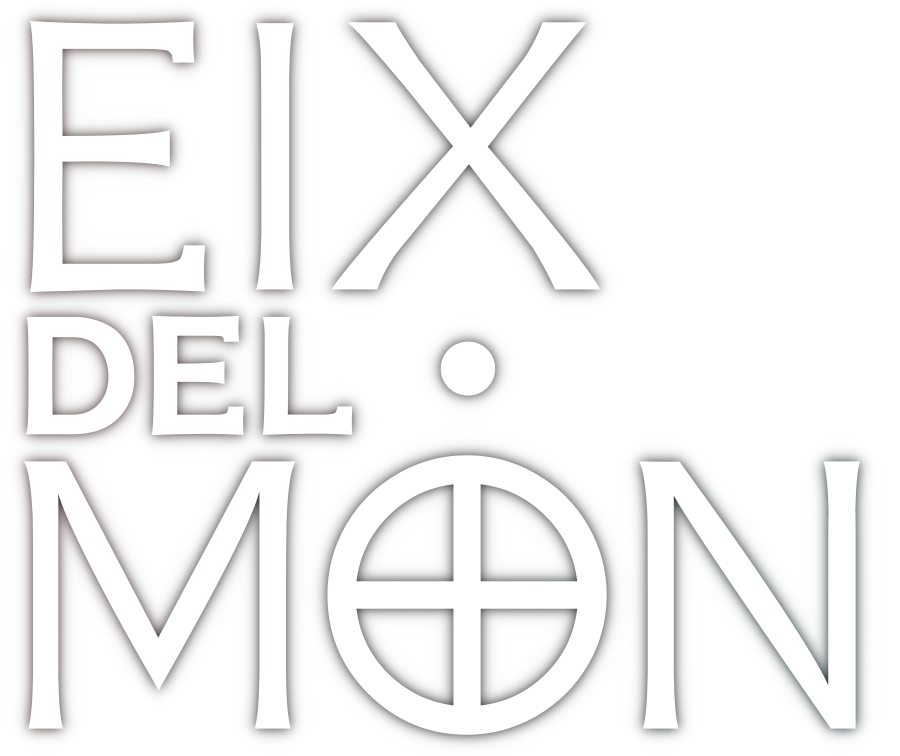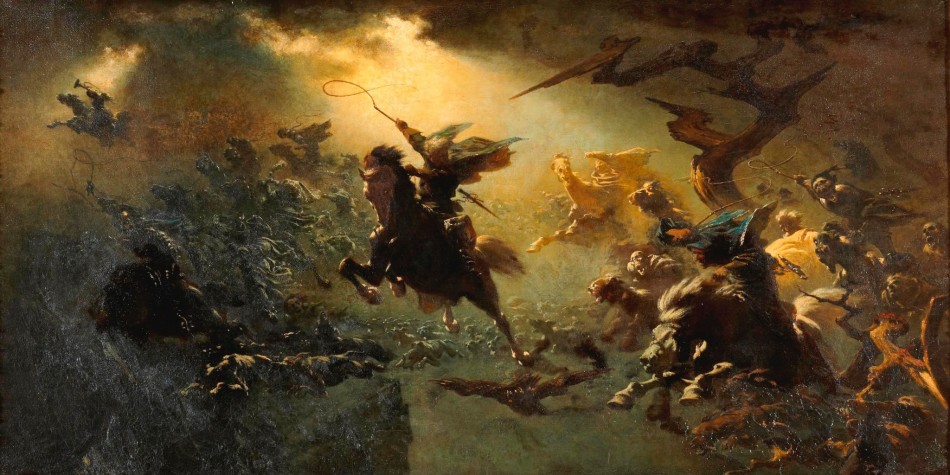Johann Wilhelm Cordes, “Wilde Jagd” (“The Wild Hunt”), 1856/57
From Wikipedia:
The Wild Hunt is an ancient folk myth prevalent across Northern, Western and Central Europe.[1] The fundamental premise in all instances is the same: a phantasmal, spectral group of huntsmen with the accoutrements of hunting, with horses and hounds in mad pursuit across the skies or along the ground, or just above it.[2]
It has been variously referred to as Wilde Jagd (German: “wild hunt/chase”) or Wildes Heer (German: “wild host”), Herlaþing (Old English: “Herla‘s assembly”), Woden’s Hunt, Herod’s Hunt, Cain’s Hunt,[4] the Devil’s Dandy Dogs (in Cornwall),[5]Gabriel’s Hounds (in northern England),[6]Ghost Riders (in North America),[7]Mesnée d’Hellequin (Old North French: “household of Hellequin“), Cŵn Annwn (Welsh: “hounds of Annwn“), divoký hon or štvaní (Czech: “wild hunt”, “baiting”), Dziki Gon or Dziki Łów (Polish), Oskoreia or Åsgårdsreia (originally oskurreia) (Norwegian: “noisy riders”, “The Ride of Asgard”),[8]Odens jakt or Vilda jakten (Swedish: “the hunt of Odin” or “wild hunt”). divja jaga, meaning “the wild hunting party” or “wild hunt”, in Slovene; Caccia Morta (Dead hunt) or Caccia selvaggia (wild hunt) in Italian; Estantiga (from Hoste Antiga, Galician: “the old army”), Hostia, Compaña and Santa Compaña (“troop, company”) in Galicia, Güestia in Asturias, Hueste de Ánimas (“troop of ghosts”) in León and Hueste de Guerra (“war company”) or Cortejo de Gente de Muerte (“deadly retinue”) in Extremadura.





